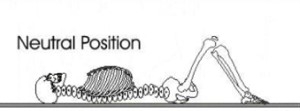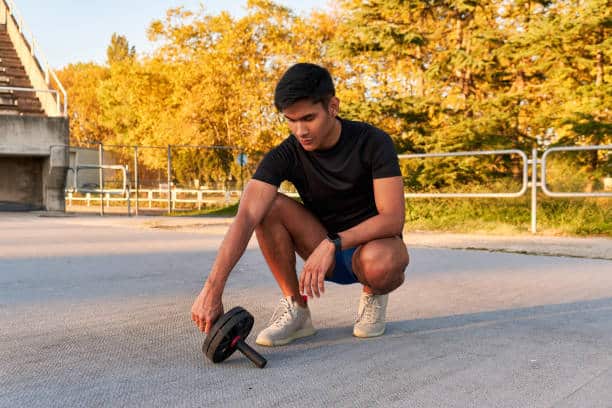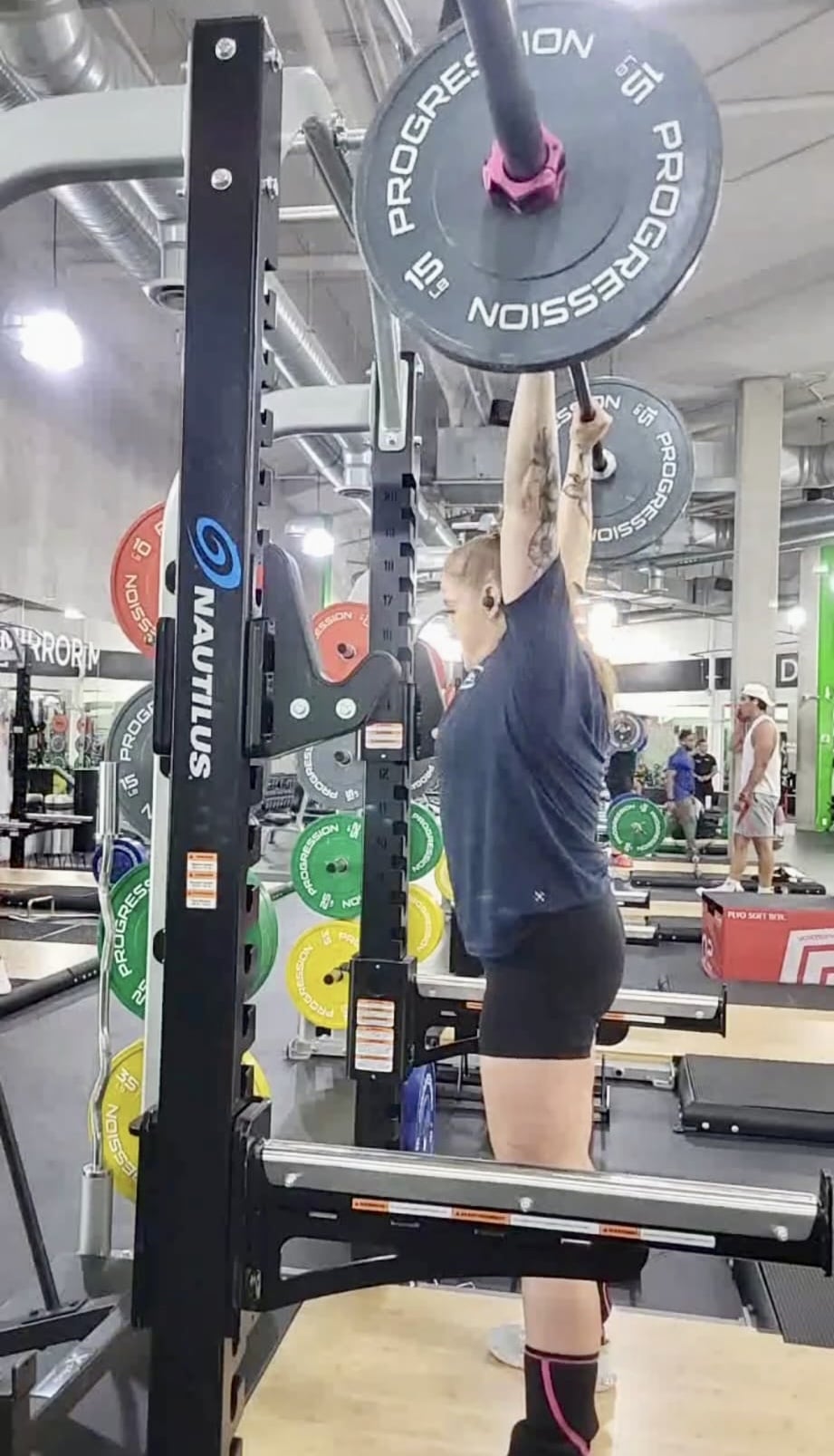Blog by:
Chad Benson, Lead Instructor, MSc, BSc, BPE, CSCS, CanFitPro PTS
Ashley Periera-Docherty, BS, MPT, NASM CPT
Logan Dube, BA Psychology, CPT, CanFitPro PTS, FIS, NWS
Our core is a system of muscles that work to improve our body’s central stability. However, the majority of people believe that those with a “6-pack” have great core function. Spoiler alert, this is rarely the case . The muscles you can’t see are very important and often neglected. For example, smaller core muscles, known as the intrinsic core act as our main stabilizing units to the pelvis and spine. These muscles are rarely trained via conventional 6-pack training, but are “abs”olutely required to:
• Support the lower axial skeleton system,
• Aid postural control,
• Ensure proper spinal loading &
• Avoid low back pain
The good news is that adding instability in the form of a Swiss ball (stability ball) can engage these key muscles while you are stilling creating metabolic demand and the elusive six pack.
Core Anatomy & Physiology:
The intrinsic core consists of smaller muscles groups, such as the transverse abdominis, internal obliques and multifidi.

These connect to the pelvis and the lumbar spine and are required on a number of key fitness and movement fronts. When people train their ‘six pack’ via heavy, high threshold patterns only, the peripheral mechanisms for stabilization and movement take over. This is referred to as “global” stabilization in the NASM CPT course manual and occurs via “bracing”. For example, the plank and side plank heavily challenge many of the important core muscles and have been shown on EMG to activate a higher % of the muscle fibers / motor units within the muscles being trained. Although these exercises are bigger bang for your buck, if these movements are trained too intensely and without regard to the intrinsic core muscles, issues such as those below may occur.
• Pelvic instability leading to pain and altered movement patterns
• Compensation from synergist muscles
• Low back pain
• Increased tension of low back (Quadratus Lumborum), hip flexors and hamstring muscles
• Muscle imbalances leading to altered biomechanics and future injuries in both the lower spine and other joints
Proper engagement of these muscles is essential. Health practitioners have many ways of explaining how to “turn on” the intrinsic core. The simplest method is via the drawing in maneuver, where you pull the lower portion of your abdomen, below the navel, in and upwards towards the spine. Now that we have the proper mechanism for engagement we now need to choose which core exercises to perform. The study below tested two common methods of transverse ambdominis (TA) activation. One group solely used stability ball core exercise, the other mat based core exercises and the control group performed regular exercise. Each group did these exercises 3x/week. It was found that the group that used the stability ball had greater strengthening of the TA over a six-month period. The article also noted that both the stability ball and the mat exercises increased TA strength over the six months more than the control group.
https://www.ncbi.nlm.nih.gov/pmc/articles/PMC5296563/
One of the reasons the stability ball had greater activation of the TA muscles is due to its shape. The fact that the ball is round and has a limited base of support makes for an unstable surface. This in turn promotes more muscles fibers to become engaged. Along with this, the stability ball is mobile and forces the user to have to resist against perturbations it creates, forcing the body to recruit more motor units in order to perform the exercise. More motor unit’s equal greater contraction of muscles. Since the ball is a progression from floor based exercises, these back and core exercises from Logan Dube should be performed for 3-6 weeks prior to the intermediate and advanced exercises listed below.
Training 3D from the Inside Out
“Your muscles and connective tissues adapt to the positions you hold all the time, so it’s common to see limited (and uncomfortable) extension. Trying to go too far too fast can cause pain and damage too! Especially with back exercises, always listen to your body and don’t go into “pain zones.”
-Logan Dube
http://blog.snclubs.com/basic-back-stretches-stand-up-and-train-right
Dead Bug:

The goal of this exercise is to achieve a neutral spine and integrate diaphragm breathing with full 360-degree core activation.

How to do it:
Start the client lying on their back with their knees bent and their feet flat on the floor. There should be a small, natural arch in the low back. Cue to exhale all the air out of their lungs and they should feel their abs tighten and the space under the low back shrink a bit. We also cue “ribs to hips” which means they want the bottom rib to pull down towards the top of the pelvis. This is called abdominal “bracing” which is much preferable to abdominal “hollowing” (when you suck your stomach up under your ribs.)
Now that you’ve achieved activated neutral keep it!
– Cue: Bring 1 knee at a time to 90 degrees above the hips.
– Cue: Reach your arms towards the ceiling (but keep your shoulder blades on the floor.)
1. Hold for up to 60 seconds without losing it (your ribs would pop up; your low back would pop up or you’d feel your tail bone drop down towards the floor.) Avoid this:

2. Your client can progress the dead bug by adding arm, leg, or opposite arm & leg drops
Progress to hollow body hold:

How to do it:
Keeping the neck neutral bring the head and shoulder blades off the floor. Extend the legs and arms only as far as possible and keep the spine in a slight bowl shape (avoid the lower back popping off the floor.) Hold for up to 60 seconds – biceps beside ears and legs lowering to just a few inches off the ground will be the hardest!
Progression via reps and sets is also possible.
Start with: RX
– 12 reps and 2 sets working towards 20 reps total and 4 sets.
– Be sure that if clients are having trouble maintaining the core, have them listen to their body and lower the reps.
– It is suggested that you keep the reps and the sets lower until they can perform all sets properly. Once they can perform steadily, you can increase.
Once clients are ready to progress from the floor based exercises they can check out some of these more advanced injury proofing back and core exercises performed on the floor and stability ball. These are a great way to help set them up for success in life sport and fitness:
Intermediate Core Exercises
Sagittal plane: https://youtu.be/J_7tik5fzdQ
Transverse plane: https://youtu.be/jsxUV9o34ds
Frontal plane: https://youtu.be/YInNkjVEkZc
Advanced Stability Ball exercises:
https://youtu.be/140kuYUuCYQ
For both the intermediate and advanced core exercises perform: RX
– 8-12 reps and 2-3 sets.
– Remember to progress the amount of sets before increasing your reps.
Keep in mind all core work has a time and place to be used. What works for one person may not necessarily be the right choice for another. When choosing simply be sure that you are able to perform the exercise correctly and do not be afraid to try something new.
www.bcpti.ca
FB: https://www.facebook.com/BCPTI/
Instagram: BCPTI
Twitter: @BCPTI
Tags:
Related Posts
We’re here to help you!
Questions, comments or want to register? Fill out the form below and we will contact you shortly. Thanks!
"*" indicates required fields


